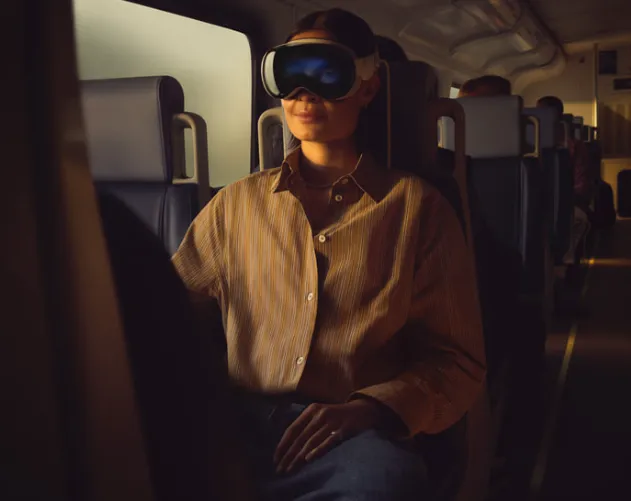Apple has officially released visionOS 2.2 for its Vision Pro headset, bringing a range of enhancements to the virtual Mac experience. The update introduces a wider display, improved audio routing, and better responsiveness, all aimed at providing a smoother and more immersive user experience.
Widescreen Mac Support Takes Center Stage
One of the standout features of visionOS 2.2 is the ability to turn the Vision Pro into a virtual widescreen display. Users can now mirror their Mac screens on the headset, creating an expansive workspace equivalent to two 4K monitors placed side by side. This upgrade is a game-changer for multitasking, creative projects, and any other task that benefits from additional screen real estate.
Enhanced Audio and Gaming Performance
Apple has also made significant strides in audio quality with this update. When a Mac is connected to the Vision Pro, audio now streams directly through the headset’s built-in speakers, removing the need for external audio devices. This feature streamlines the setup and offers a more integrated and seamless experience.
For gaming enthusiasts, visionOS 2.2 brings improvements to responsiveness, reducing latency and providing a more immersive gaming experience on the Vision Pro.
Bug Fixes and Usability Enhancements
In addition to these major updates, visionOS 2.2 addresses several issues that were reported during the beta testing phase. For example, bugs like Siri becoming unresponsive and Firefox failing to play videos on the virtual Mac display have been resolved. Furthermore, interactions with virtual objects have been improved, making the system more intuitive and user-friendly.
Continuous Refinement of visionOS
This update continues Apple’s pattern of steady refinement for the Vision Pro. Earlier versions of visionOS brought new features like gesture controls and personalized settings, while previous updates focused on improving stability and performance.
With visionOS 2.2, Apple reaffirms its commitment to making the Vision Pro an even more powerful tool for users, bringing us closer to a seamless blend of augmented reality and computing.
